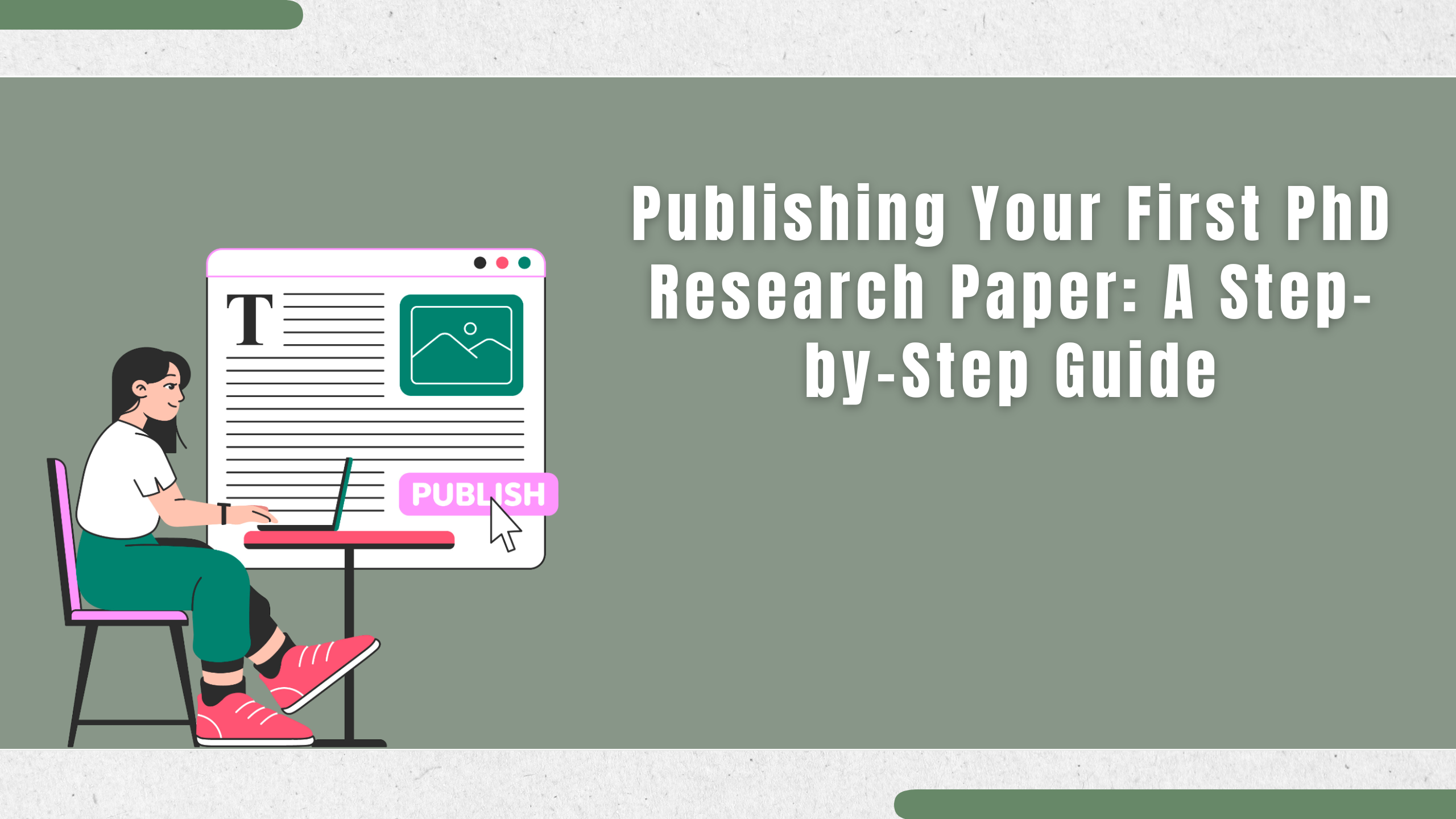13May

Publishing your First PhD Research Paper as a PhD scholar is a significant milestone. It’s more than just a requirement—it’s your entry into the academic community, a testament to your research skills, and a key to building your scholarly reputation. However, the process of writing and submitting your First PhD Research Paper can be overwhelming, especially if you’re unfamiliar with academic publishing standards, journal requirements, or peer-review mechanisms. In this comprehensive step-by-step guide, we break down the process of publishing your first PhD research paper, from ideation to post-publication promotion. Whether you’re just starting your PhD journey or are ready to submit your first manuscript, this blog will help you navigate the path with confidence.

Before diving into the technical process, it’s important to understand why you need to publish.
Why Publish During a PhD?
Publishing is not just about adding a line to your resume; it’s about contributing new knowledge to your field.
Not all research topics are publication-ready. Journal editors and reviewers look for originality, relevance, and scientific rigor.
How to Choose a Publishable Topic:
Avoid repetitive or overly broad topics. Journals prefer focused research that solves a specific problem.
Publishing starts with solid research. Without credible data and logical analysis, even the best-written paper will fail in peer review.
Tips for High-Quality Research:
Once your findings are reliable and insightful, you’re ready to move to the writing stage.
Choosing the right journal is half the battle. Submitting to the wrong journal can lead to instant rejection.
What to Look For:
Pro tip: Create a shortlist of 3–5 journals ranked by relevance, speed, and prestige.
Now comes the most crucial step—writing the research paper. Each journal has its own formatting and structural requirements, but a standard research paper includes:
Common Structure:
Tools like Grammarly, Mendeley, or EndNote can streamline writing and referencing.
Every journal has strict submission guidelines. Missing even small formatting details can lead to desk rejection.
What to Check:
Use the journal’s template or manuscript checklist to ensure compliance.
Your cover letter is the first thing the editor sees. It should:
Keep it brief (1 page) but impactful.
Use the journal’s online submission portal to upload your manuscript, cover letter, and other required documents. After submission, you’ll get a Manuscript ID to track progress.
Stages to expect:
Don’t get disheartened if revisions are suggested—they’re part of the process.
If your paper is not rejected outright, you’ll likely receive “revise and resubmit” feedback. Address comments politely and systematically.
Tips for Revision:
A well-handled revision greatly improves your chances of acceptance.
Once accepted, you’ll receive an acceptance letter and your paper will move to production. Congratulations—you’re now a published researcher!
After Acceptance:
Your first publication opens doors. Make the most of it.
Repeated rejections | Re-evaluate journal choice and seek mentor feedback |
Plagiarism issues | Use tools like Turnitin to maintain originality |
Formatting errors | Follow the author guidelines precisely |
Poor English language | Use editing tools or hire a proofreader |
Fear of criticism | Remember: feedback improves your research |
Don’t let these hurdles discourage you. Every published author was once a first-timer.
Publishing your First PhD Research Paper can seem daunting, but it’s entirely doable with a strategic approach. It’s not just about technical knowledge; it’s about understanding journal expectations, meeting quality standards, and being open to feedback. If you’re struggling with where to start or how to refine your First PhD Research Paper manuscript, consider seeking support from academic writing services like Kenfra, which guide PhD scholars from topic selection to final publication in Scopus or SCI-indexed journals.
Kenfra Research understands the challenges faced by PhD scholars and offers tailored solutions to support your academic goals. From topic selection to advanced plagiarism checking.

Starting a PhD in 2025 is both an opportunity and a challenge. With evolving research methods and new tools,... read more

Publishing in reputed journals is a dream for every researcher, but one of the most common reasons for rejection... read more
Uttarakhand Technical University VC ordered to conduct RDC meet within 2 months Uttarakhand Technical University (UTU) is a public technical... read more
After completing a PhD, there are many career pathways to consider. Here are the top 10 careers in India after... read more

A PhD literature review is one of the most crucial parts of your thesis. It lays the groundwork for... read more
If a 48-year-old has received a gold medal from the Indian Institute of Science (IISc), it is a testament to... read more

Framing research objectives and questions is the most crucial step in setting a strong foundation for any academic project, whether... read more
WhatsApp us
Leave a Reply